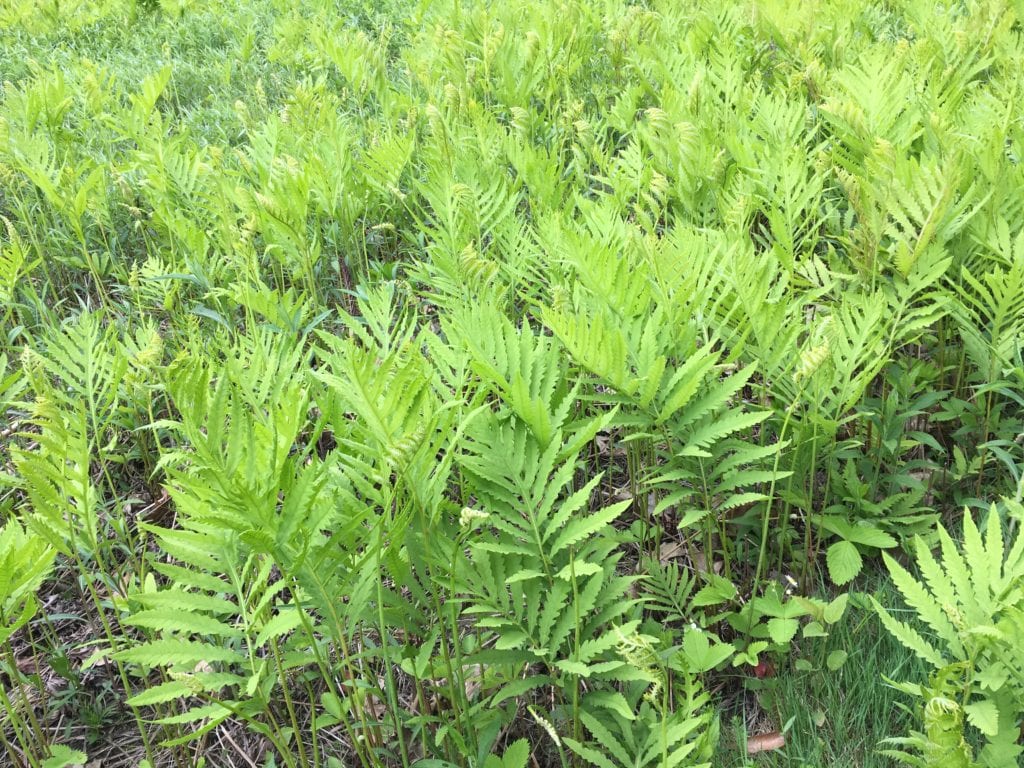
Maine Audubon regularly features posts by guest authors as part of our Maine’s Naturalist series. If you’d like to explore contributing a post about Maine wildlife, send an email to media@maineaudubon.org. Today’s post is from Susan Gilpin.
All through May, I have been trying to identify ferns in their fiddlehead state, emerging from the mud curled up like the ends of violins. Because all ferns emerge like this, they are almost impossible to tell apart. Except for ostrich ferns.
The fiddleheads of ostrich ferns are wrapped in brown tissue-paper. Ostrich fern fiddleheads are the ones many people eat. They taste like asparagus shoots. I haven’t had very good luck finding them. The window for finding them is very short, because if you blink, you miss it. I missed it again this year.
Ferns like to tease. The fiddleheads of some species are reddish and rubbery, like gummy worms, but there are no red ferns. Some are pale and fuzzy, but there are no fuzzy ferns. Some are lacy, and some are hairy. But which will grow up to be which? Spring fiddleheads hold onto their secrets like a baby clutching a spoon. They will not let go.
After a month of mystery, at River Point Preserve on May 28, some ferns finally started taking grown-up shapes. In some patches, the red gummy worms were turning into sensitive ferns. (Don’t say mean things to sensitive ferns, or they will cry.)
The stalk of one generic lacy green fern was suddenly interrupted half way up by brown, shriveled leaflets; the leaflets above and below stayed green. Aha! A clue! An interrupted fern, interrupted by spores half way up. Ferns are ingenious about stashing their spores, only this species stashes them around its waist. This strategy is so effective, there was a whole field full of interrupted ferns, pale green and glorious in the early morning sunshine.
It was a great morning for finding ferns. The fuzzy ferns and the hairy ferns are still holding onto their secrets, so I will have to go back in another week and see what they have turned into.

